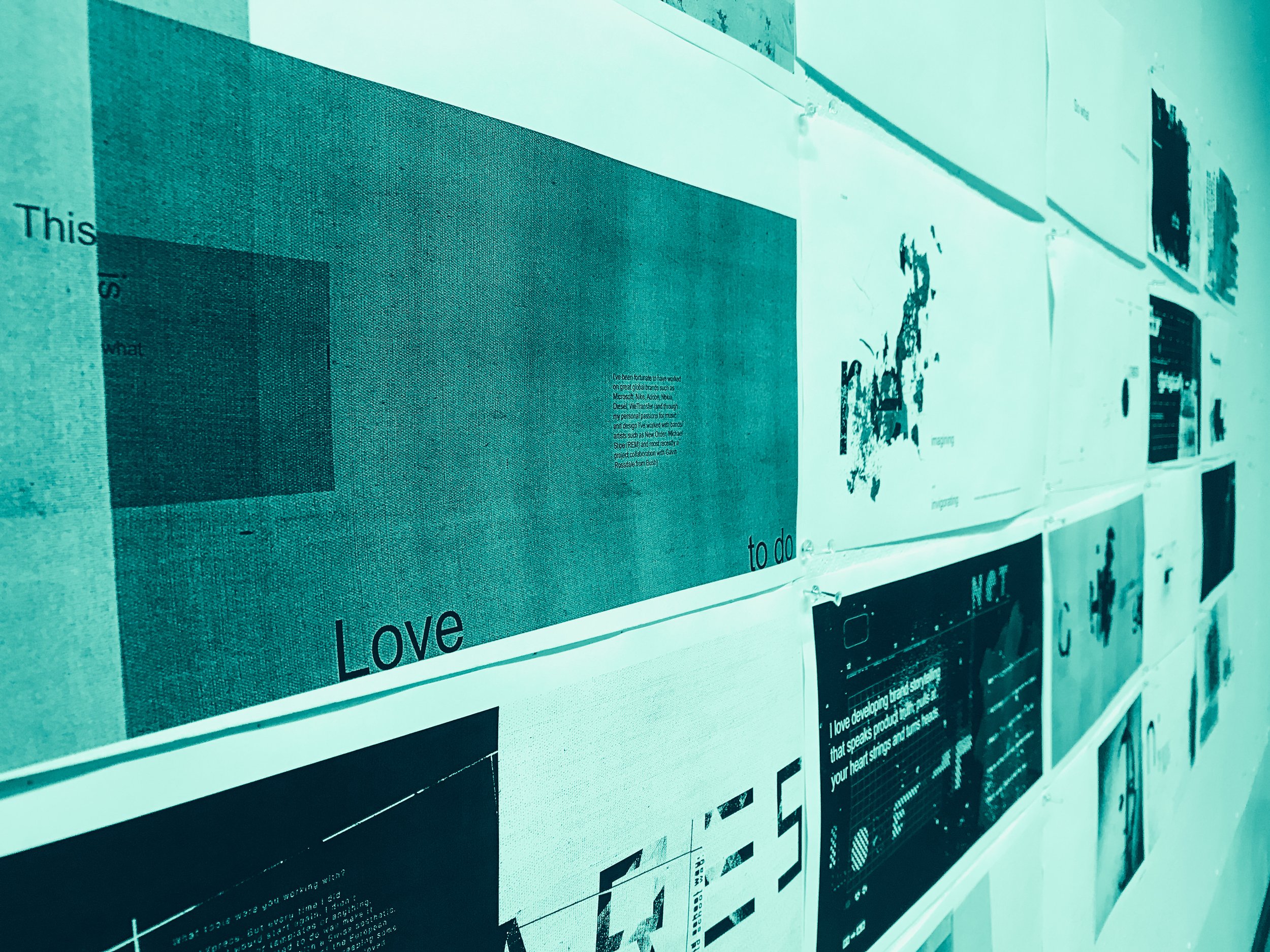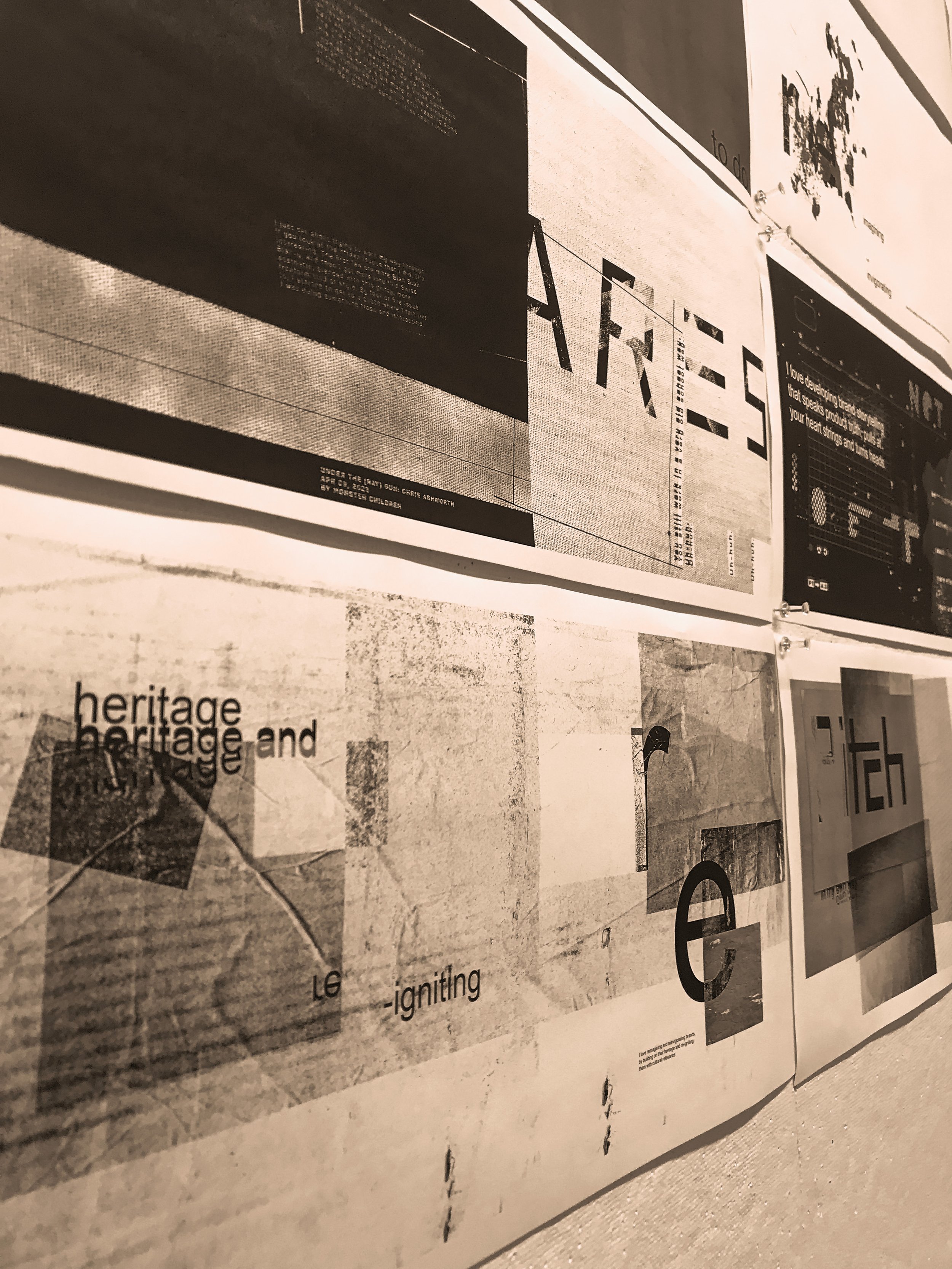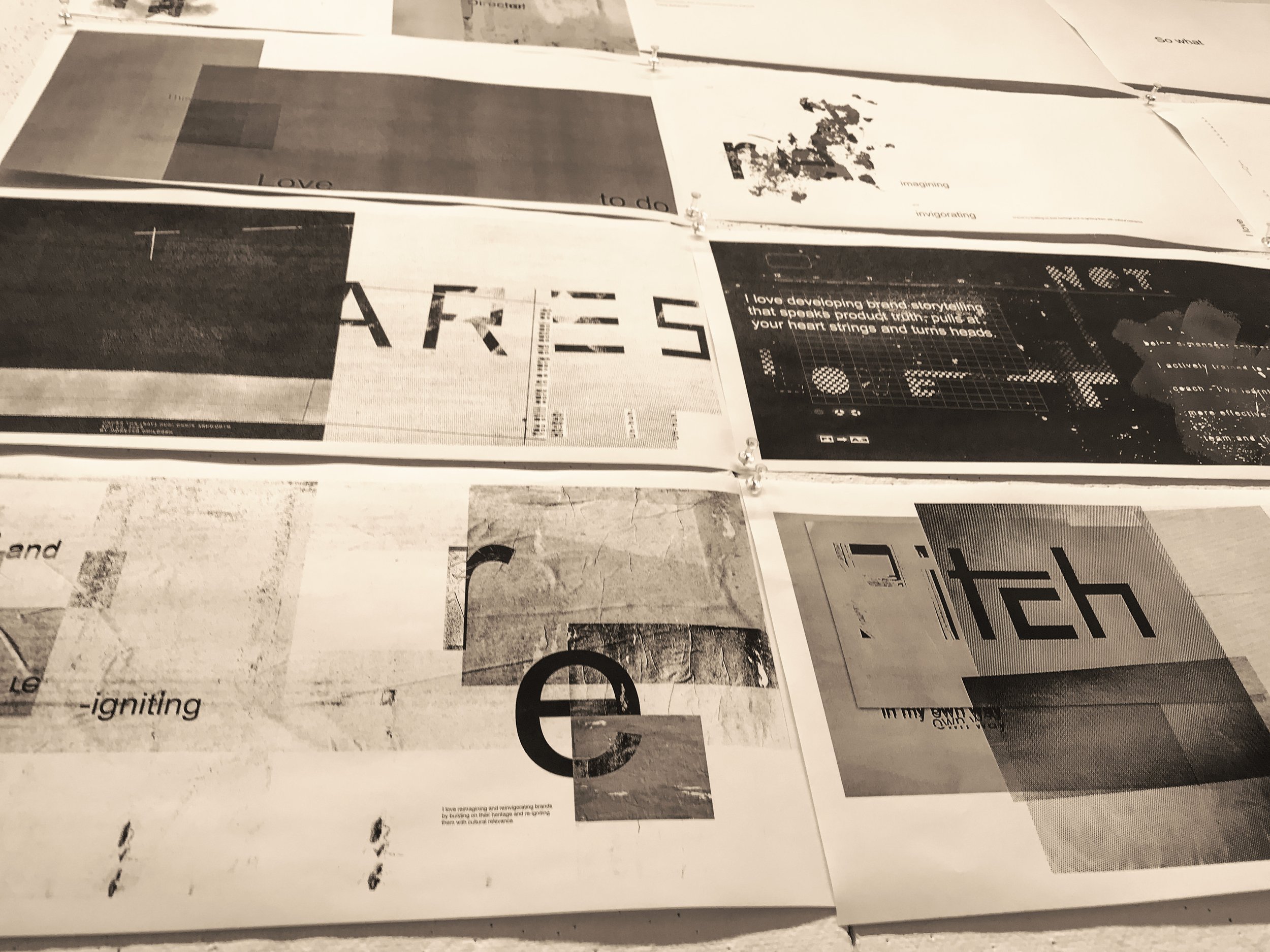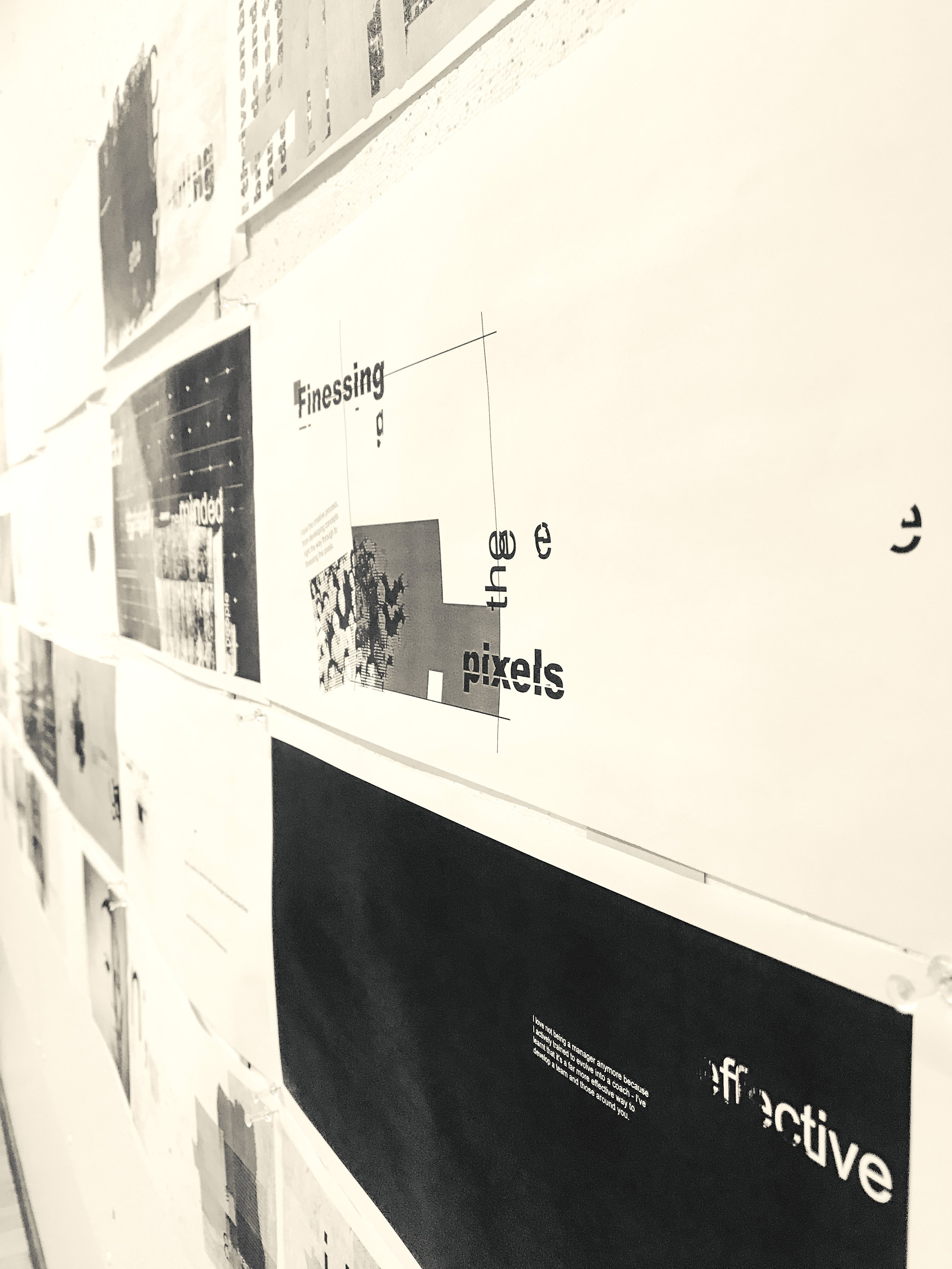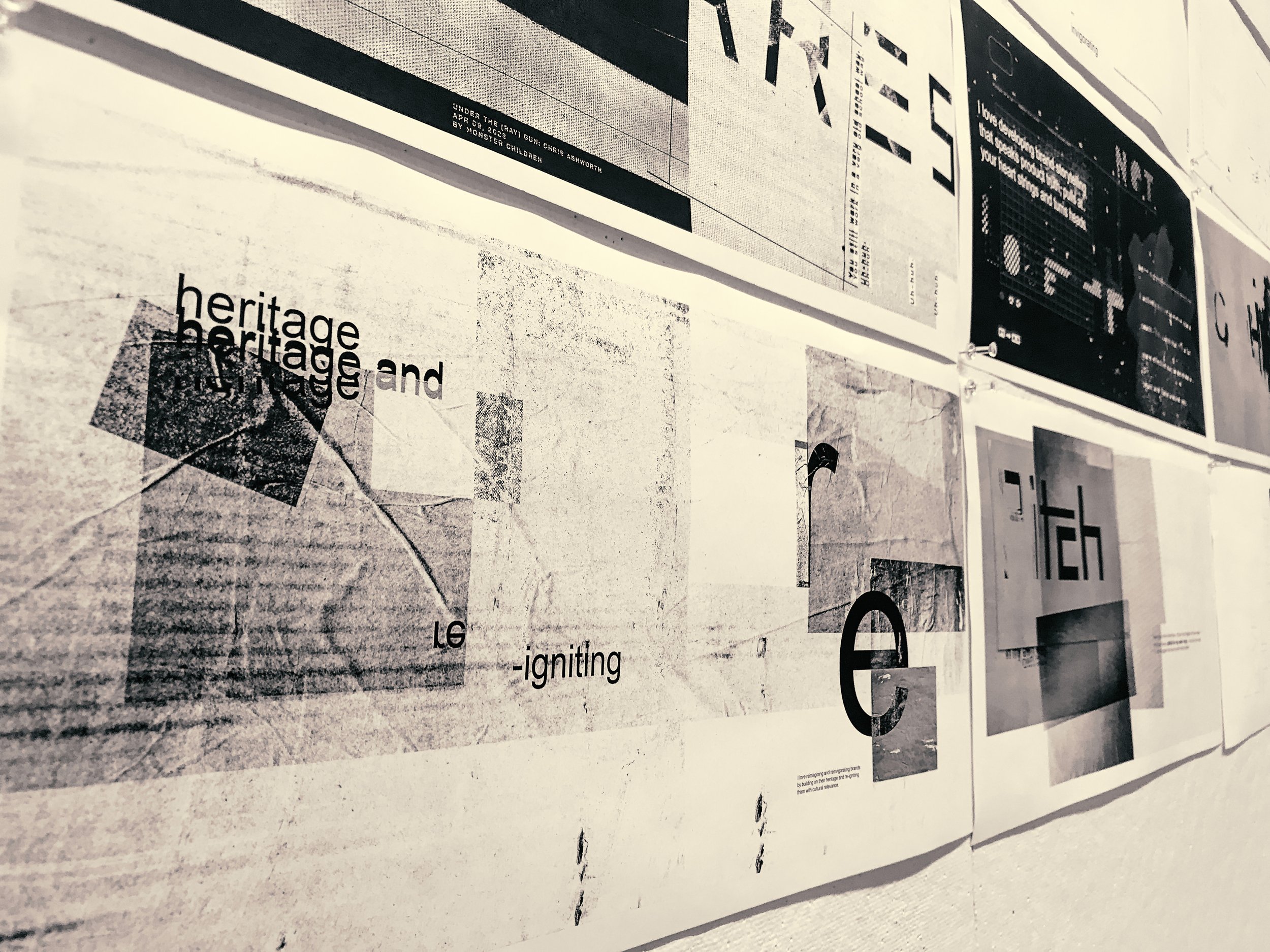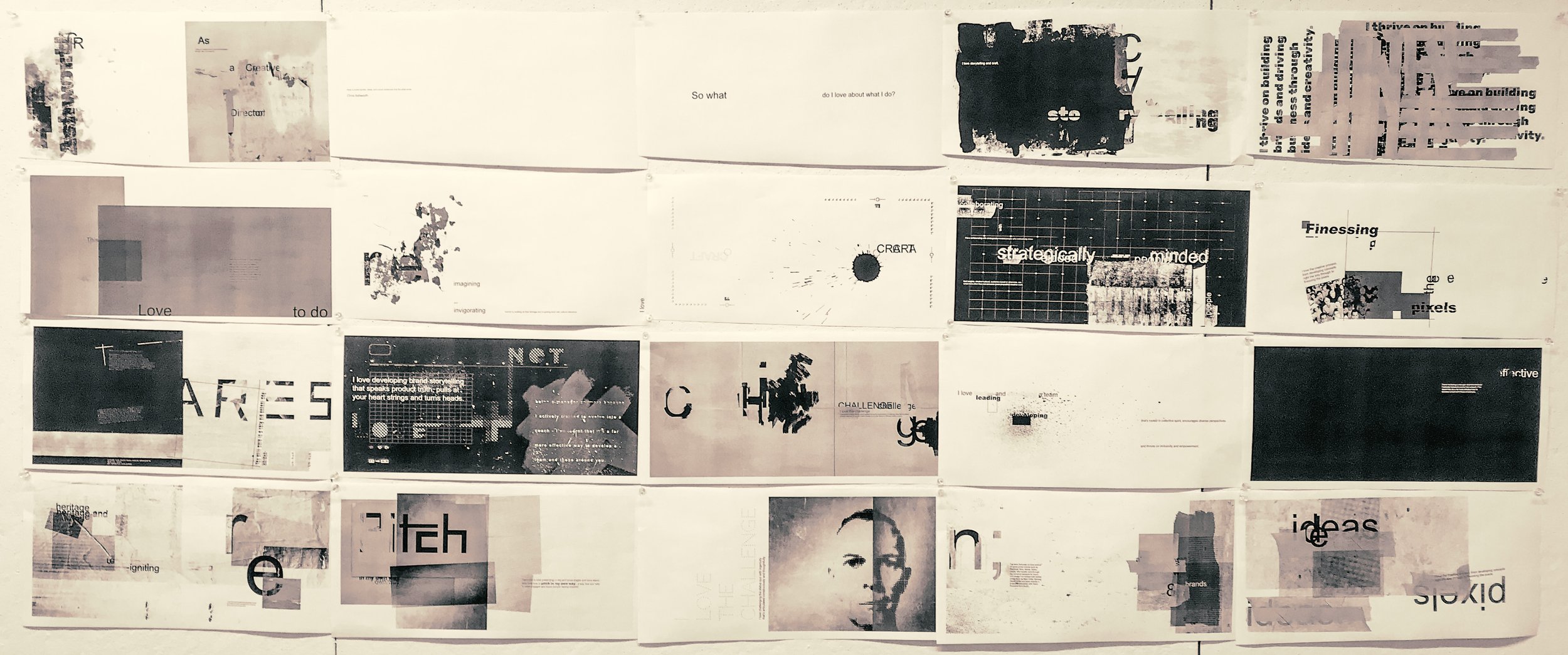
CHRIS ASHORTH
Spreads design
INTRODUCTION
The typographic grid is a complete page structure revealed and codified, made tangible and permanent. Its purpose is to aid the designer in the logical organization of information to improve accessibility and comprehension. Visually incongruous elements, whose only association is proximity on the page, can happily coexist within a well-conceived grid system. Ideally, the nature and needs of the content will determine the grid’s form.
A well-functioning typographic grid is flexible enough to encompass diverse content yet robust enough to cohere its various parts. Too loose, and it risks diluting the intended message and confusing the reader; too rigid, and it risks strangling the information and rendering it lifeless.
OBJECTIVES
> Create visual artistic spreads that are inspired by the theme
> To develop & implement a coherent, comprehensive grid system
> To investigate issues of sequence & continuity as they relate to book design
> To gain experience in extended typographic systems
PROBLEM
Your task is to design several representative reader spreads for a book based on a renowned artist or designer. Present the information in a logical, unified, and visually expressive manner, and convey an essence or capture the subject matter’s spirit.
DESIGN REQUIREMENTS
> Cover
> Title page (double-page spread)
> Table of contents
> Chapter opener, essay & footnotes, if any (at least two double-page spreads)
> Image section (at least one double-page spread)
> Biographic timeline (at least one double-page spread)
Spreads should include folios (page numbers) and running heads or feet.
Essay spreads should include at least one image each.
You may add additional text, such as quotes, for added interest.
CONSIDER
> The nature of the content/ information
> Form to be in harmony with the content, not emulating or overpowering it
> Representing content through typographic/ formal means
> Asymmetry in the application of a multi-axial grid
> Contrasts such as texture, rhythm, value, scale, position, & positive & negative space
> The audience to be educated, visually literate, & interested in painting & the arts
Each spread has 2 pages

story board
STUDIES

